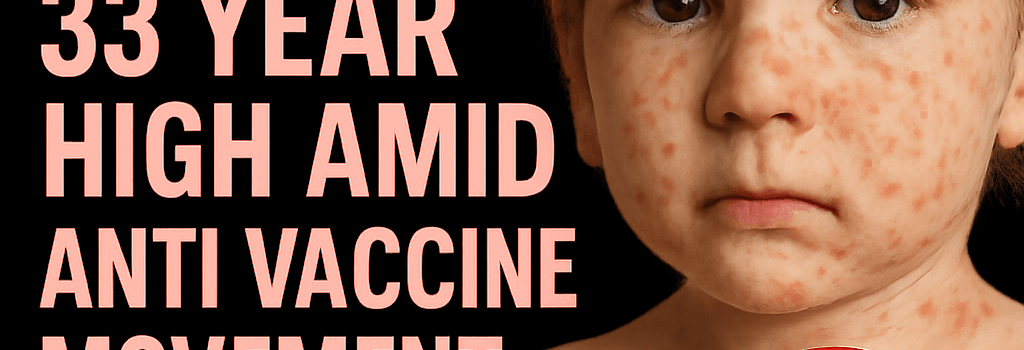Measles Cases Reach 33-Year High Amid Anti-Vaccine Movement

As of July 6, 2025, the United States has reported 1,281 confirmed measles cases since January 1—surpassing the previous 2019 record of 1,274 and marking the highest tally in 33 years. With vaccination coverage dipping below the 95% herd-immunity threshold, experts warn the US is on track to lose its elimination status unless swift measures are taken.
Current Outbreak Landscape
- National Spread: Cases span 39 states, with 27 discrete outbreaks in the first half of the year.
- Major Epicenter: A four-state cluster centered in Gaines County, Texas, accounts for 950 cases.
- Hospitalizations & Fatalities: CDC data shows 155 hospitalizations and three deaths—two healthy children in Texas and one adult in New Mexico—all unvaccinated.
Impact of Anti-Vaccine Leadership
“Sustained misinformation at the federal level undermines decades of immunization gains,” says Dr. Peter Hotez, vaccine researcher at Baylor College of Medicine.
Since taking office, Health Secretary Robert F. Kennedy Jr. has publicly questioned the safety profile of the live-attenuated measles component of the MMR vaccine and promoted unproven remedies such as high-dose vitamin C. Independent reviews confirm that measles vaccine efficacy exceeds 97% after two doses and adverse events occur in fewer than 0.1% of recipients.
Vaccine Efficacy and Cold Chain Logistics
The measles vaccine requires a cold-chain temperature range of 2–8 °C. Recent audits by the Association for Vaccine Access found up to 15% of US clinics report minor temperature excursions, potentially degrading potency. Innovations in RFID-enabled transport containers and real-time IoT monitoring are being piloted to ensure in vitro viral titer remains above the protective threshold of 103 plaque-forming units per dose.
Sociodemographic Drivers of Hesitancy
Vaccination coverage among kindergartners has fallen to 92.7%, with certain communities reporting rates below 80%. Factors include:
- Distrust fueled by social media echo chambers
- Access barriers in rural and low-income areas
- Misinterpretation of VAERS data leading to overestimation of adverse events
Policy Implications and Future Outlook
Public health authorities urge reinstating school-entry mandates, expanding mobile immunization clinics, and deploying AI-driven surveillance to detect clusters within 48 hours. The World Health Organization has also flagged a global resurgence, recommending member states achieve ≥95% two-dose coverage by year’s end. Without intervention, the US elimination status—lost after 12 months of uninterrupted transmission—could officially lapse by mid-2026.